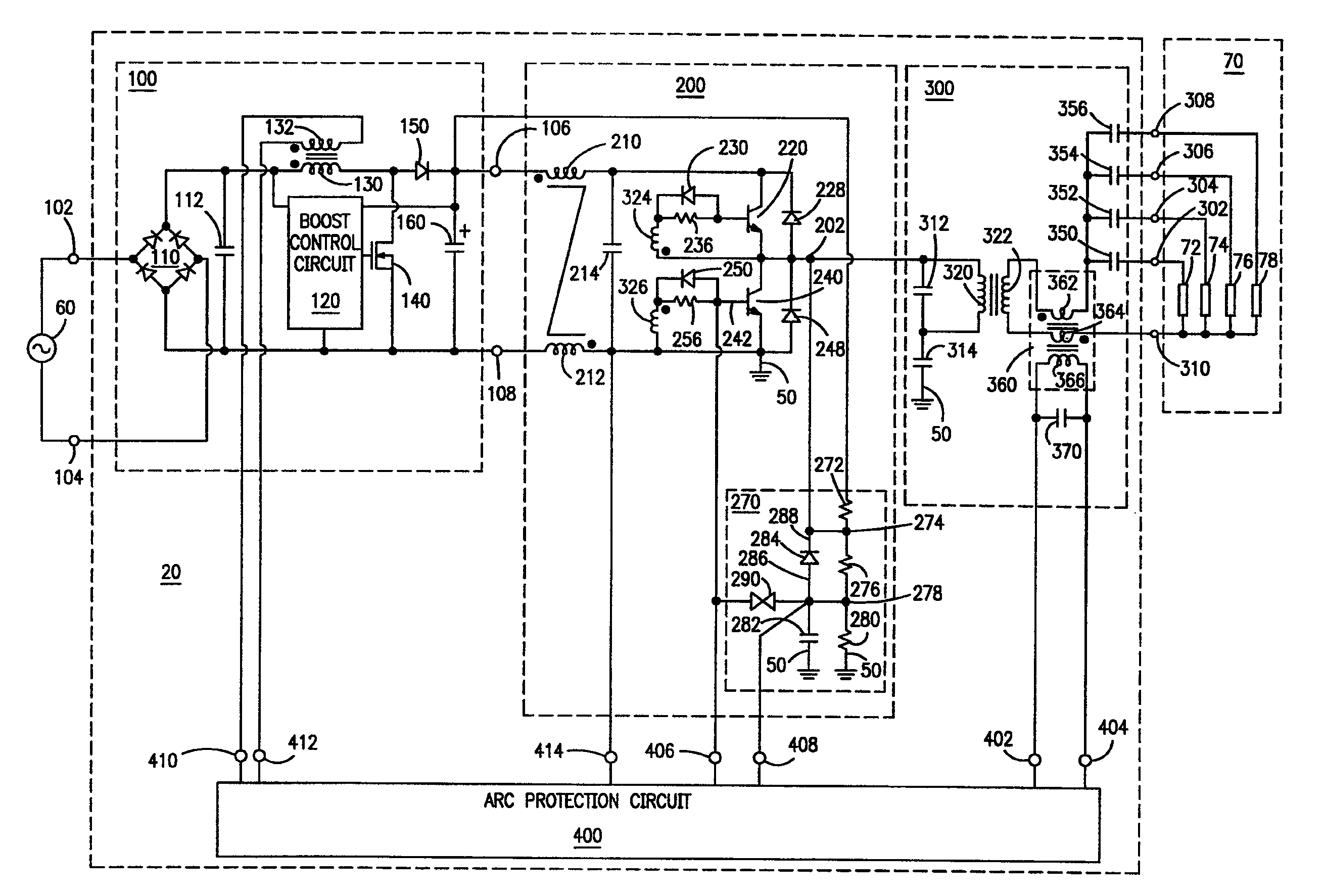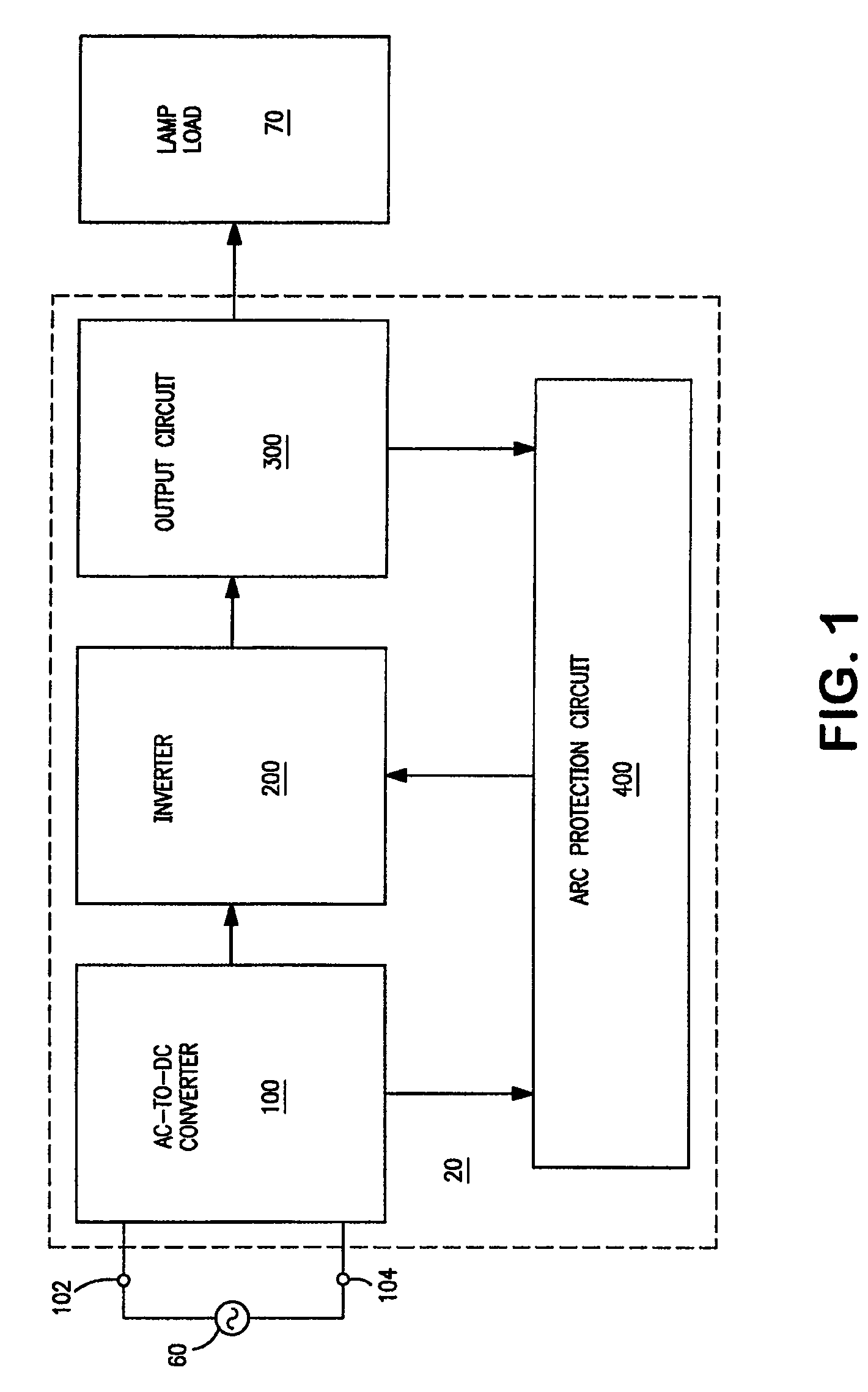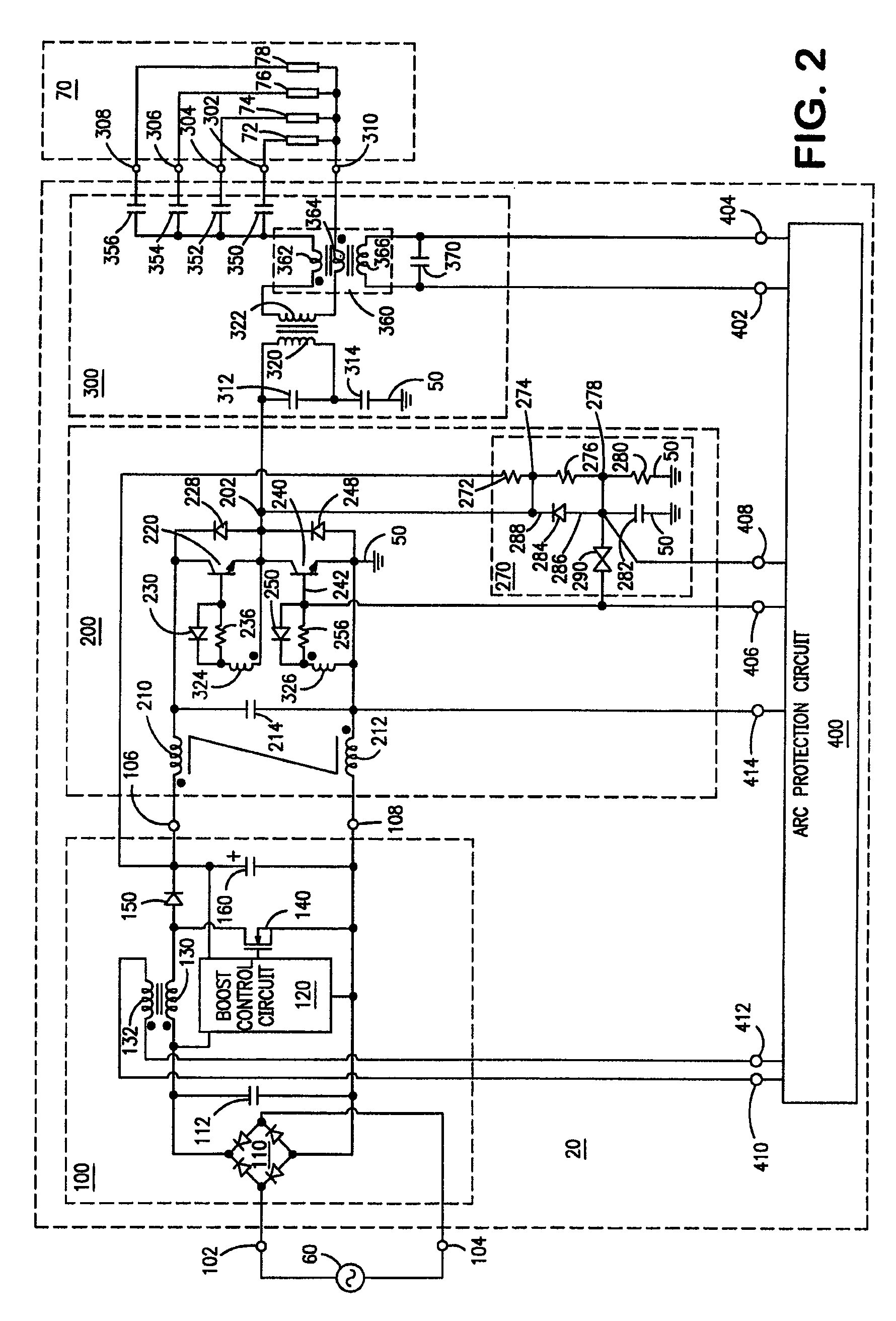Ballast with arc protection circuit
a protection circuit and ballast technology, applied in the direction of electric variable regulation, process and machine control, instruments, etc., can solve the problems of high intensity, sustained arc (, opposed to momentary arc) may occur
- Summary
- Abstract
- Description
- Claims
- Application Information
AI Technical Summary
Benefits of technology
Problems solved by technology
Method used
Image
Examples
Embodiment Construction
[0020]Referring to FIG. 1, a ballast 20 for powering a lamp load 70 (that includes one or more gas discharge lamps) comprises an AC-to-DC converter 100, an inverter 200, an output circuit 300, and an arc protection circuit 400. AC-to-DC converter 100 has inputs 102,104 for receiving an AC supply voltage 60 (e.g., 277 volts rms at 60 hertz). During operation, AC-to-DC converter 100 provides a DC rail voltage to inverter 200. Inverter 200 is characterized by having a normal operating frequency (e.g., 40 kilohertz); that is, the operating frequency of inverter 200 is normal when at least each of the lamps within lamp load 70 is operating in substantially normal manner, and when at least no arc condition is present at any of the sockets within the lighting fixture to which the lamps (within lamp load 70) are connected. Output circuit 300 is coupled to inverter 200, and is adapted for coupling to lamp load 70. Arc protection circuit 400 is coupled to inverter 200 and output circuit 300; ...
PUM
 Login to View More
Login to View More Abstract
Description
Claims
Application Information
 Login to View More
Login to View More - R&D
- Intellectual Property
- Life Sciences
- Materials
- Tech Scout
- Unparalleled Data Quality
- Higher Quality Content
- 60% Fewer Hallucinations
Browse by: Latest US Patents, China's latest patents, Technical Efficacy Thesaurus, Application Domain, Technology Topic, Popular Technical Reports.
© 2025 PatSnap. All rights reserved.Legal|Privacy policy|Modern Slavery Act Transparency Statement|Sitemap|About US| Contact US: help@patsnap.com



